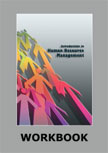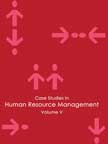The State Bank of India VRS




|
|
ICMR HOME | Case Studies Collection
Case Details:
Case Code : HROB007
Case Length : 07 Pages
Period : 2001
Organization : State Bank of India
Pub Date : 2001
Teaching Note : Available
Countries : India
Industry : Banking and Finance
To download The State Bank of India VRS case study
(Case Code: HROB007) click on the button below, and select the case from the list of available cases:

Price:
For delivery in electronic format: Rs. 200;
For delivery through courier (within India): Rs. 200 + Rs. 25 for Shipping & Handling Charges
» Human Resource and Organization Behavior Case Studies
» HRM Short Case Studies
» View Detailed Pricing Info
» How To Order This Case
» Business Case Studies
» Area Specific Case Studies
» Industry Wise Case Studies
» Company Wise Case Studies
Please note:
This case study was compiled from published sources, and is intended to be used as a basis for class discussion. It is not intended to illustrate either effective or ineffective handling of a management situation. Nor is it a primary information source.
|
|
<< Previous
Excerpts
Background Note
|
The SBI was formed through an Act of Parliament in 1955 by taking over the
Imperial Bank. The SBI group consisted of seven associate banks:
• State Bank of Hyderabad
• State Bank of Indore
• State Bank of Mysore
• State Bank of Patiala
• State Bank of Saurashtra
• State Bank of Travancore
• State Bank of Bikaner & Jaipur.
|
|
The SBI was the largest bank in India in terms of network of
branches, revenues and workforce. It offered a wide range of services for both
personal and corporate banking. The personal banking services included credit
cards, housing loans, consumer loans, and insurance. For corporate banking, SBI
offered infrastructure finance, cash management and loan syndication...
The Protests
The SBI was shocked to see the unprecedented outcry against the VRS from its
employees. The unions claimed that the move would lead to acute shortage of
manpower in the bank and that the bank's decision was taken in haste with no
proper manpower planning undertaken.
They added that the VRS would not be feasible as there was an acute shortage
of officers (estimated at about 10000) in the rural and semi-urban areas
where the branches were not yet computerized. Moreover, the unions alleged
that the management was compelling employees to opt for the VRS. They said
that the threat of bringing down the retirement age from 60 years to 58
years was putting a lot of pressure on senior bank officials to opt for the
scheme...
|
|
The Post VRS Days
According to reports, SBI's total staff strength was expected to
come down to around 2,00,000 by March 2001 from the pre-VRS level of
2,33,000 (Refer Table III). With an average of 5000 employees
retiring each year, analysts regarded VRS as an unwise move. By June
2001, SBI had relieved over 21,000 employees through the VRS. It was
reported that another 8,000 employees were to be relieved after they
attained the retirement age by the end of 2001. Analysts felt that
this would lead to a tremendous increase in the workload on the
existing workforce... |
|
|



